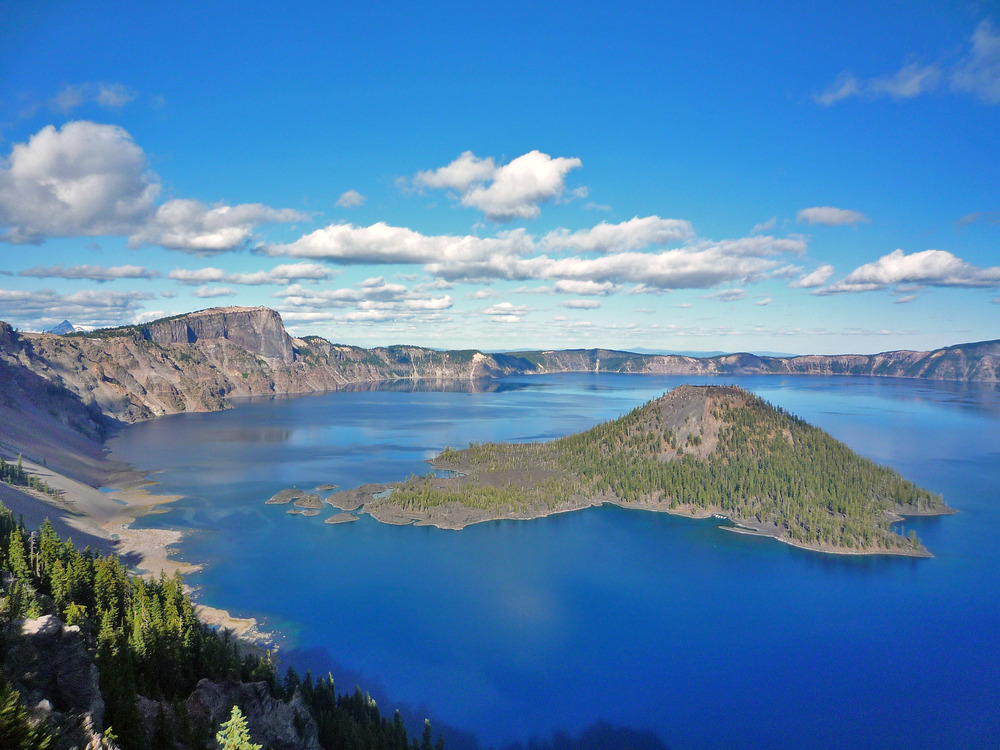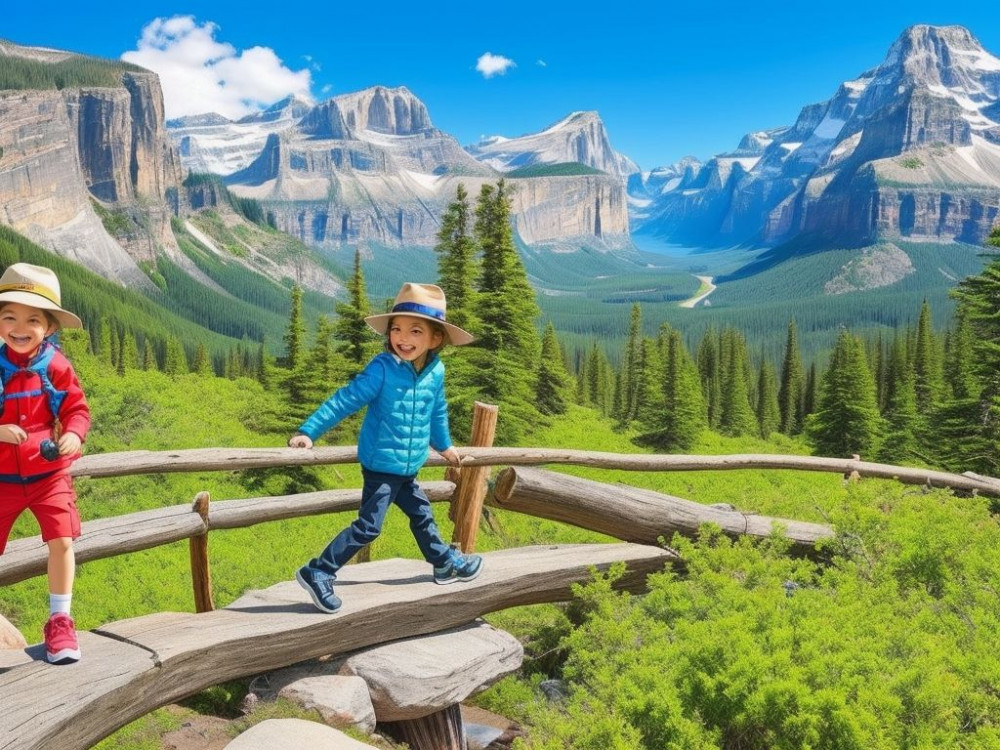Want an awesome journey? Visit Crater Lake National Park! It’s ideal for adventurers and nature-lovers. The vibrant blue waters and stunning views provide an amazing experience. Explore the park with boat tours or hikes. You won’t believe the beauty of this place!
Introduction
Crater Lake National Park is an enchanting treasure, tucked away in the Oregon wilderness. Its crystal-clear waters and beautiful surroundings offer a unique experience. The park is home to the blue Crater Lake, made from an ancient volcano. It’s 1,943 feet deep – the deepest lake in the US and one of the deepest in the world.
Exploring this special place, you’ll be immersed in a wonderland. Cliffs surround the lake, creating a majestic view of the vibrant blue waters. Hiking trails twist through lush forests, home to many creatures. During winter, visitors can ski or snowshoe through the snow-covered park.
This park has one special feature – Wizard Island, a volcanic cone rising from the lake. It offers hiking and exploration on a smaller scale, giving a different perspective of the park’s wonders.
Crater Lake is known for more than just its beauty. It has the cleanest water worldwide, with visibility up to 100 feet! This has been measured scientifically with special equipment.
Crater Lake National Park captivates visitors with its natural beauty and geological formations. Whether you’re seeking adventure or relaxation, this amazing place promises an unforgettable experience.
Location and History
Crater Lake National Park—it’s like Mother Nature playing an elaborate game of hide and seek! This stunning natural wonder lies in southern Oregon and was created around 7,700 years ago. Mount Mazama’s collapse created a volcanic crater that filled with rain and snowmelt, forming the deep blue lake we see today.
The park has a rich history, stretching back to the Native American tribes who lived there for thousands of years. They believed the lake was sacred and home to powerful spirits, and may have even used it for ceremonial purposes. In 1853, John Wesley Hillman documented the lake during a surveying expedition. But it wasn’t until 1902 that President Theodore Roosevelt made it the fifth national park in the US.
William Gladstone Steel, a journalist from Kansas City, visited the lake in 1885 and fell in love with it. He was so passionate about preserving it that he dedicated his life to raising awareness of its beauty. His work eventually led to the establishment of Crater Lake National Park.
The lake is surrounded by towering cliffs and lush forests and offers an unforgettable experience for nature lovers and history buffs alike. Whether you’re exploring its hiking trails or admiring its crystal-clear waters from a viewpoint, Crater Lake is a must-visit destination.
Geography
Crater Lake National Park is a mesmerizing destination for nature enthusiasts, adventurers, and curious minds. It’s the deepest lake in the U.S. and its clear blue waters are a sight to behold!
Surrounding cliffs and peaks offer a breathtaking backdrop. Plus, the park contains ancient forests with towering trees – standing the test of time – as well as cinder cones, caves, and other volcanic remnants.
The lake’s unique formation creates an ecosystem unlike any other. Scientists have even discovered a submerged lava dome known as Wizard Island!
Geological studies by Dr. Harry Glicken reveal Crater Lake experiences volcanic activity at a lower rate than other volcanic regions. But this doesn’t take away from its allure or significance.
So pack your bags and embark on an adventure into this geological wonderland! And be prepared for all kinds of weather – from sunny and warm to ten feet of snow.
Climate
Crater Lake National Park has a diverse climate, adding to its natural beauty. It experiences cold, snowy winters and warm, dry summers, due to its geographical features. On average, 44 feet of snow falls each year – making it one of the snowiest places in the USA. Winter sports enthusiasts will admire the snow-covered mountains and evergreen forests.
When summer comes around, visitors can enjoy sunny skies and hikes on scenic trails. The lake itself was formed when Mount Mazama erupted and collapsed – creating a deep caldera filled with rainwater and snowmelt. The crystal-clear waters of the lake captivate all who gaze upon them.
Crater Lake National Park offers a climate that embraces both extremes – from snowy winters to warm summers. There is something special to experience here all year round. Flora and fauna reign supreme, and humans aspire to be as majestic as a moss-covered rock.
Flora and Fauna
At Crater Lake National Park, Flora and Fauna reveal a captivating landscape. With loads of plant life and wildlife, this visual feast is a paradise for nature lovers!
Examine the Flora and Fauna and you’ll spot a wealth of species. There are over 700 types of flowering plants, like Oregon iris and bear grass. Douglas fir and mountain hemlock trees tower over the landscape, giving shade and protection to animals. Unique species like Brewer’s spruce are also thriving in this ecosystem.
The Fauna of Crater Lake National Park is equally stunning. Mammal species such as beavers, black bears, and mule deer can be found. Birders will be delighted seeing bald eagles and peregrine falcons in the mountain air. The lake is also bustling with fish species like rainbow trout.
In this vivid environment, you can have amazing wildlife experiences. One visitor had the rare opportunity to witness a family of river otters joyfully sliding down a snowy hillside near the lake. It was an incredible moment!
Crater Lake National Park’s Flora and Fauna make mesmerizing scenery that adds life to its stunning landscapes. Whether you’re a daring hiker or just admire nature, this remarkable park will leave you in awe of its beauty and variety.
Ecosystem
At Crater Lake National Park, a diverse ecosystem flourishes to captivate visitors from far and wide. An array of plant and animal species come together to create a harmonious balance within its pristine environment.
Towering coniferous forests and delicate wildflowers blanket the meadows, while rugged terrain provides habitats for black bears, eagles, and mule deer. Ancient lava flows, testimony to the park’s volcanic past, add to its allure. Plus, volcanic vents contribute to the lake’s distinctive azure hue.
To protect this delicate ecosystem, visitors are urged to stay on designated trails and follow wildlife viewing guidelines. Partake in educational programs to foster appreciation and understanding of the intricate web of life. By implementing responsible exploration, we can make sure Crater Lake National Park’s ecosystem continues to thrive for future generations.
Conservation
Crater Lake National Park has been successful in preserving its natural beauty and biodiversity. Conservation strategies such as removing non-native plants and monitoring wildlife populations ensure protection of the park’s delicate ecosystems, wildlife habitats, and geological wonders.
The park also focuses on educating visitors about conservation importance. Through informative signage and guided tours, they highlight the significance of preserving the park’s environment.
Did you know that Crater Lake is renowned for its deep blue color? The lake’s clarity allows sunlight to penetrate deeply, creating this breathtaking hue. Source: National Park Service.
Overall, Crater Lake National Park’s conservation efforts guarantee the continued preservation of its remarkable features. Plus, visitors can enjoy a leisurely picnic—just watch out for the hungry chipmunks!
Recreation
Explore Crater Lake National Park, where visitors can partake in various recreational activities! Hike scenic trails, fish in the tranquil waters, camp under a starlit sky and snowshoe through wintery terrain. Boat tours are also available to explore the lake and its stunning surroundings. Additionally, you can join guided birdwatching tours and photography workshops to further enhance your experience!
To make the most of your visit, remember these tips: plan ahead, stay hydrated, dress appropriately and follow safety guidelines. With these in mind, you can have a safe and memorable visit to Crater Lake National Park! And don’t forget – unless you’re a fish, it’s the perfect vacation destination!
Tourism
Crater Lake National Park – so beautiful that even Mother Nature is jealous! Tourists from all over flock here for the pristine beauty and natural wonders. Explore the park’s numerous hiking trails – from easy strolls to challenging treks, there’s something for everyone. Plus, behold the unique feature of Wizard Island, a volcanic cinder cone rising from the lake. Go boating, wildlife watching, and don’t forget to camp overnight! For those seeking solitude, visit during off-peak seasons or weekdays – fewer crowds and more opportunities for peaceful exploration. Book your campsite ahead of time – demand is high!
Future
The future of Crater Lake National Park is bright!
Developments and improvements are in the works. A new visitor center with educational resources, interactive exhibits, and information about the park’s geological history is being constructed. Accessibility is also being improved through trails and facilities for disabled individuals. Sustainable practices are being implemented, such as energy-efficient technologies and eco-friendly transportation options. Research into the park’s ecosystem and geology will continue.
Plus, the park holds the record for the purest body of water in the world! Clarity depth: 142 feet (43 meters). No wonder it’s one of nature’s wonders!
FAQ
What is Crater Lake National Park?
Crater Lake National Park is a stunning natural attraction located in southern Oregon. It is renowned for its pristine, deep-blue crater lake which was formed thousands of years ago by the collapse of the Mount Mazama volcano.
How deep is Crater Lake?
Crater Lake is one of the deepest lakes in the world, with an average depth of 1,148 feet (350 meters). Its maximum depth is 1,949 feet (594 meters), making it the ninth deepest lake globally.
Can I swim in Crater Lake?
No, swimming is not allowed in Crater Lake. The lake’s cold water temperature, which rarely rises above 55 degrees Fahrenheit (13 degrees Celsius), poses significant risks to swimmers. Additionally, the cliffs surrounding the lake make it challenging to access the water safely.
Are there hiking trails at Crater Lake?
Yes, Crater Lake National Park offers a variety of hiking trails suitable for all experience levels. From easy lakeside walks to more challenging summit hikes, there are options for everyone to explore and enjoy the park’s breathtaking scenery.
When is the best time to visit Crater Lake?
The best time to visit Crater Lake National Park is during the summer months, from June to September, when the weather is mild, and most facilities and roads in the park are open. However, the park’s stunning beauty can be admired year-round, with each season offering unique experiences.
Are there camping facilities at Crater Lake National Park?
Yes, Crater Lake National Park has developed campgrounds available for visitors. However, due to the park’s popularity, it is recommended to make reservations in advance, especially during peak tourist seasons.




Leave a Reply